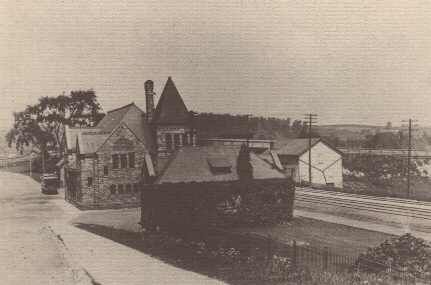|
| The lives of the first settlers to arrive in the area
that was to become known as Ann Arbor was very difficult. The trip to this
area was not an easy one, and once they arrived, more hard work awaited
them. Many of Ann Arbor's first settlers came from the New England coast.
Traveling by land in these days was challenging. Many travelers followed
old trails that had been created by the Native Americans
in this area. The terrain was extremely wet, causing the trails to be muddy.
The chief means of travel were wagons drawn by horses, mules and oxen.
Despite the best efforts of the best team, it was common for a settlers'
wagons to begin to sink in the mud. Being located close to the Huron River
did not help the water levels in the village of Ann Arbor either. Often
whole sections of the village became immersed in water. |
|
| The instability of the ground prevented the residents
from erecting any buildings more than two stories in height. The water
levels did not allow for dry basements in newly constructed houses where
settlers stored their precious crops and food stock. Because of this, the settlers
had to store their food supplies in upstairs living areas or make frequent
trips to purchase more.
Flour and meal for consumption had to be brought from Detroit in
the early days of the city. Dealing with the swampy terrain, settlers often
took a whole week to get to Detroit. |
 |
Great improvements came to travel and transportation
of freight with the establishment of the Michigan Central Railroad, which
connected to Ann Arbor in 1839. Not only did this help to bring more settlers,
the railroad decreased the amount of time that it took to get freight,
such as flour and other food products, from one town to the next. |
|
